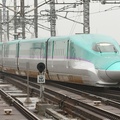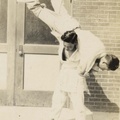How is a "bicultural" personality formed? In Japanese society, the importance of intercultural understanding is being emphasized, and at the same time, interest in "biculturalism" is growing.
To be "bicultural," one must be able to seriously confront "connections" such as culture and ethnicity, and accept them as one's identity. In Japanese society, the idea of a single ethnic group and single culture has become ingrained in society, for better or worse, and it cannot be said that there is a deep understanding of "bicultural" itself.
This time, I would like to share with you how I developed a bicultural personality through Japanese food culture.
1. My first encounter with spicy tuna rolls
In the summer of 2002, shortly after I set foot on American soil, I had a chance to eat "SUSHI" in Little Tokyo. As soon as I entered the restaurant, I noticed something very interesting, so I ordered it. It was...
Spicy Tuna Roll
Spicy Tuna Roll is an interesting name. And the pleasant punch of spiciness is something you can't see or taste in Japan. For me, it was a very foreign and mysterious food. It was like Japanese "sushi" but not really "sushi" at the same time, it was a very strange thing.
The spicy tuna roll I tried in Little Tokyo was a cultural baptism for me, who had just arrived in America. It was also an opportunity for me to gain a broader understanding of American history and culture.
② Days of Americanization
In the fall of 2002, while attending a community college, I made many American friends in order to gain a broader understanding of American history and culture. This also meant I had an encounter with mainstream American food culture.
From my history professor, I learned about various foods in America, how to eat them, and their cultural background. She had a reputation among her students as being very strict, but she was actually a very caring and slightly playful person.
Through mainstream American food culture, I experienced a transitional period of Americanization. At the time, I was aiming to become American in spirit, even though my origins and appearance were Japanese (Taiwanese).
In my everyday life, I was immersed in mainstream American food culture, from freshly cooked rice to sour bread, and from rice with raw eggs to scrambled eggs.
3. Rediscovering the charm of "SUSHI" - Ethnic studies and me
In the summer of 2005, I transferred to California State University at Fullerton and began studying Asian and Oceanian American history as a major in Ethnic Studies.
What I have come to understand through ethnic studies is that Asian and Oceanian Americans have created a "bicultural" culture that is creative and ingenious in order to be accepted by mainstream American society while maintaining their "connection" with Asia.
Learning about the widespread acceptance of Asian-Pacific American culture in mainstream American society made me want to try the spicy tuna roll again, something I had encountered when I first arrived in the United States.
Spicy Tuna Roll is a food that has a connection to Japan, sushi. It is also a food that developed in mainstream American society. SUSHI, which has a connection to two countries and two cultural spheres, Japan and America, can be said to be a bicultural food culture that represents Japanese culture.
So, does "bicultural" also apply to humans? Let's take Japanese people as an example.
Japanese Americans are Americans, but at the same time, they also have a "connection" with Japan. Japanese Americans are active in various fields within mainstream American society, but they are also people who maintain some kind of "connection" with Japan.
Being "bicultural" is one of the characteristics that many Americans have. It is also a "human charm." When I learned that, I became more confident in my own "bicultural" identity.
4. A fresh start as a "bicultural"
Now that I am a Taiwanese-Japanese person who is truly "bicultural," I am actively engaged in collecting "stories" from Japanese-Taiwanese and Japanese people through oral history and entrusting them to the future. This is my life's work and my mission.
In the future, Japanese society will need even more bicultural people. I believe that breaking away from the conventional notion of a single race and culture is necessary for the development of Japanese society.
© 2012 Takamichi Go
Nima-kai Favorites
Each article submitted to this Nikkei Chronicles special series was eligible for selection as the community favorite. Thank you to everyone who voted!











